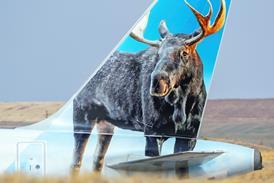The single-engine turboprop sector is thriving. Dire predictions of a downturn because of very light jets have proved unfounded as an array of cost-conscious operators faced with rising fuel prices flock in increasing numbers to buy these distinctive aircraft.
"Demand is huge," says Fred Muggli, head of marketing at Pilatus Aircraft, manufacturer of the $2.9 million PC-12. "We are not losing ground to the VLJ." The Stans, Switzerland-based company has delivered more than 700 of the nine-seat aircraft to date and "production is sold out until 2010", Muggli says, with most orders coming for the $3.6 million executive-configured aircraft. "We will deliver 90 aircraft this year and ramp up to 105 next year when the Next Generation PC-12 will have entered service." The upgraded model, scheduled for certification at the end of the year, features a Honeywell Primus Apex avionics system, a new cockpit designed by BMW Designworks USA, and a more powerful Pratt & Whitney Canada PT6A-67P engine.
For EADS Socata, manufacturer of the high-performance TBM 850, the picture is equally rosy. "Last year was our best year since we started building the aircraft in 1990," says the Tarbes, south-west France-based company. "We are committed to producing 50 aircraft this year and perhaps more next," it adds. Unlike many of its counterparts Socata has been reluctant to commit to a glass cockpit version of the aircraft. "It is a big investment and suppliers' backlogs are so full, it won't be easy to get the systems," it says.
Since it began installing the Avidyne FlightMax Entegra glass cockpit as standard, Piper Aircraft has boosted Meridian fleet numbers with 49 aircraft delivered last year. Other immediate enhancements to the $1.9 million aircraft are unlikely for the time being as Piper is now concentrating on bringing its PiperJet to market and the Meridian is ideally placed in Piper's line-up to transition to its new single-engine offering.
Meanwhile, Cessna is believed to be focusing on a new single, high-performance turboprop to fill the gap between its Citation Mustang very light jet and the company's top-end piston singles. Its ubiquitous Caravan utility turboprop surpassed the 1,650 aircraft delivery point late last month and continues to sell well, with 67 aircraft handed over last year. In service for little over two decades, the Caravan also recently exceeded a time-in-service milestone of 10 million flight hours.
For Germany's Extra Flugzeugbau, developer of the EA-500, such milestones are pipedreams. The Hunxe-based company, smarting from its abortive attempt last year to raise much-needed funding on the London Stock Exchange, is planning to deliver the first aircraft in August. "We needed this big-scale investment to enable us to ramp up production," says the company. "It will be a very slow process now, so we are only planning to deliver four aircraft this year and 10 next year, and will serve the European customers for the next two years until we are able to ramp up to 10 aircraft annually," it says. Extra is hoping to acquire European instrument flight rules approval in the next six months.
The latest market entrant, Quest Aircraft, is advancing towards certification of its 10-seat Kodiak Sandpoint. Idaho-based Quest says it has a three-year backlog for the $1.3 million aircraft, which is largely funded by missionary aviation groups in exchange for receiving aircraft at cost.
Flight's EBACE page....
Business aviation page....
Business aviation pocket guide...
Source: Flight International























